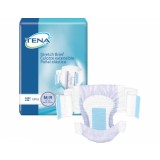Your Cart is Empty

Talking To Your Doctor About Urinary Incontinence
Self-Help for Men with Incontinence
Specialists Who Can Treat Incontinence
Getting Information and Support
Kegel Exercises For Men

Talking To Your Doctor About Urinary Incontinence
Men tend to have difficulties talking about certain things, and discussing bladder control issues might be number one on the taboo topic list for some. If you're experiencing urinary incontinence (UI), it's important to let your healthcare provider know. When discussing the issue with him or her, be prepared to talk openly in order to eventually get the proper diagnosis and most effective treatment. Start by gathering information your healthcare provider may need in order to open the lines of communication.
First, make a list of your incontinence symptoms: difficulty starting to urinate, weak stream, dribbling or leakage, feeling like your bladder isn't emptying completely... the list could go on, but it's very important to include anything and everything you're experiencing. Over a few days, record your urination habits. For example, keep track of how many times you woke up during the night to go to the bathroom, or how many times you felt the urge to urinate and then couldn't. Definitely take note if you've experienced any pain or bleeding with urination and mention any recent stomach, rib, or back pain. Finally, be honest about whether your urinary symptoms are interfering with your lifestyle.
If you've already started using absorbent undergarments to manage your problem, use them as a sort of gauge. Let your healthcare provider know how much liquid is being captured and how well the absorbency level you're using works. The more information you provide, the better your treatment plan will be.

Self-Help for Men with Incontinence
While working with your healthcare provider to come up with the best treatment plan for your urinary incontinence is extremely important, there also are several lifestyle changes that may give you more control over your situation. These include:
These self-help strategies, combined with your healthcare provider's recommendations and the regular use of protective undergarments, will help you feel both proactive and comfortable while you and your doctor work toward a solution for your incontinence.

Specialists Who Can Treat Incontinence
If you start to experience symptoms of incontinence, it's important to consult your healthcare provider. Remember, incontinence is a symptom, not a disease. Depending on the cause of your incontinence, your healthcare provider may refer you to a specialist who's trained to treat the problem. The medical field is very specialized, so all of the different terms and titles can be confusing. Here's a quick guide to terms you might hear during your visit with your healthcare provider:
When discussing incontinence with any healthcare provider, it's very important to be honest about all of your symptoms in order to receive the most effective advice and treatment. It helps to keep track of your symptoms in a journal right when they appear; that way, when you visit your healthcare provider, he or she will be able to see exactly when the problem started, how and at what rate it got worse or better, etc.

Getting Information and Support
Incontinence can be troubling, confusing, and embarrassing. It's a difficult problem to talk about, especially with people who have never experienced what you're going through. It's important to understand that you're not alone, and because incontinence can be a highly emotional issue, it helps to discuss and share with others who can relate.
The Internet provides access to all sorts of resources, including online incontinence support groups. No matter your gender or the cause or severity of your incontinence, there's a community of people out there who understand your problem first-hand. Have a look at the discussions at Daily Strength and the National Association for Continence. Researching, inquiring, joining, and learning are great ways to help everyone involved understand and manage incontinence.
Knowing where to obtain protective products is also an important part of maintaining good physical and emotional health, as they allow you to assert some degree of control over bladder or bowel issues and help preserve privacy and dignity. National Incontinence has a full line of incontinence products designed to accommodate both men and women with varying degrees of incontinence.

Kegel Exercises For Men
When men experience incontinence, it's often due to prostate problems, prostate surgery, or side effects of medication. Overflow incontinence (involuntary leakage of small amounts of urine), however, is usually due to a weak bladder or pelvic floor muscles. Many people assume that pelvic floor exercises, or Kegel exercises, are only effective for women, but they can also help men control overflow incontinence.
Here's what the experts at the Mayo clinic suggest: Squeeze the muscles that you would use to stop your urine flow. You want to feel a slight pulling-up feeling, but make sure not to tighten your abdominal and leg muscles or your buttocks. When contracting these muscles correctly, some men will feel their penis being pulled slightly toward them. Hold the contraction for three seconds, relax for three seconds, and then repeat.
One of the great things about Kegel exercises is that they can be performed anytime, anywhere, and will go a long way toward improving pelvic muscle strength. In the meantime, always use absorbent undergarments in case of occasional accidents or leakage.